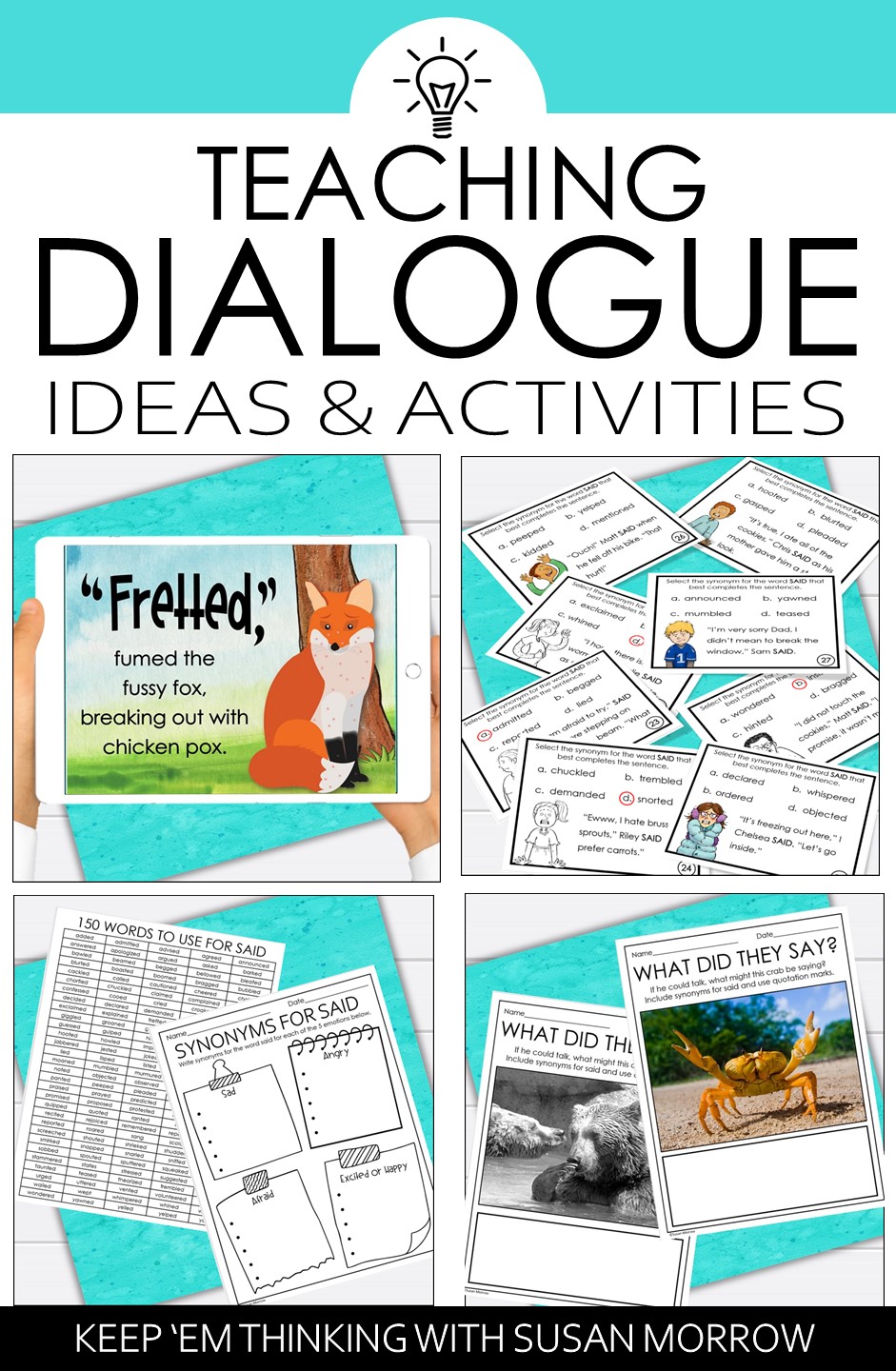
I love that my students love to write! They are so creative and come up with some of the best story plots with all the right elements. But there’s just one thing… They tend to overuse the word said when writing dialogue. I often get multiple stories with “he said”, “she said”, I’m sure you can see where I’m going with this. Or even worse, they use the wrong synonym for said when conveying a feeling or an action. Does this sound familiar? Don’t worry! Stick around, and we’ll talk about how to break up with this bad writing habit for good. Teaching students to write and punctuate dialogue doesn’t have to be hard!
Use Humor
One of my favorite ways to get a “buy-in” from students is to use humor! Especially when working to critique a bad writing habit. This is why I wrote the story “Did You Hear What They Said at the Zoo.” I wrote this story years before I ever started TPT. I thought I wanted to write a children’s picture book. I sent it to one publisher and never heard back. It was a running joke for my husband, he would tell me that said was dead and until I revived him. He was so funny. So I decided to create a product with it! I had the courage to put it out there.
If you find yourself struggling with this as well, check out this story. It’s the best way I’ve found to teach my kids over 47 different synonyms for said but in a light-hearted and funny way. We discuss the reasons that dialogue is so important in stories. Plus, it gives students an insight into a character’s feelings or emotions and can also show how the character interacts with others in the story. This can help you reach the unreachable student!

The Role of Dialogue
Dialogue can truly make or break a story, as it serves so many purposes. Explain to students the depth and extra elements that it can bring to their writing. Dialogue not only advances the plot, but it helps make the story more interesting and realistic. Discuss with students the importance of setting the story’s tone or mood and how dialogue affects that. Not only that, but it also can provide insight into a character’s background and the setting of the story.
Modeling Dialogue in Class
It’s great to read small snippets of dialogue from books in your classroom to show how dialogue makes the story more interesting. My students often have difficulty selecting a synonym for said to convey the meaning in their story. This can be used as a way to show or introduce conflict.
For example, grumbled can show a disgruntled character, and shouting can indicate fear or anger, depending on the sentence’s context.
We talk about how the character is feeling and the sentence’s context before selecting a good synonym for said. This gives students a greater understanding of tone and how it affects the story. I created some task cards with pictures and some text to give content and a choice of four synonyms for said to use in a sentence.

Practice Makes Perfect when Writing and Punctuating Dialogue
Finally, it’s time to practice writing some dialogue. First, I review the rules for punctuating dialogue and then give them some pictures of animals, and then students write dialogue to accompany each picture.
The pictures are pretty funny, and I love all the ideas they come up with. Using old comic strips is also fun – white out the dialogue and have the kids write their own or even give them pictures with people talking and have them glue on speech bubbles and write dialogue.
Punctuating dialogue can be tricky, so I make sure I have a poster up in the room showing them the punctuating dialogue rules. A copy of the poster is included in the Free Animal Photo prompts for writing dialogue. Teaching students to write and punctuate dialogue doesn’t have to be hard! Use these simple tips to make teaching writing and punctuation of dialogue more enjoyable and educational!
Don’t miss any of the upcoming lessons! You can join my email list to be notified of all the interactive lessons coming up! By joining the email list, you will also receive freebies for blog exclusive subscribers!






